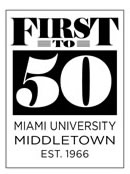MUM50 - MUM Launched Wave of Regional Campus Construction
This is the twelfth in a series of historical vignettes tracing the work of the community and Miami University that led to the opening of Miami University Middletown in September 1966.

This is the twelfth in a series of historical vignettes tracing the work of the community and Miami University that led to the opening of Miami University Middletown in September 1966.
In the early 1960s Ohio's public universities offered evening classes at more than thirty satellite locations, usually in local high schools. Miami had five of these sites, including one at Middletown that had been  operating since 1946. These operations came to be officially and consistently designated as "academic centers," though at the time the terms "branches" and "branch centers" were also used.
operating since 1946. These operations came to be officially and consistently designated as "academic centers," though at the time the terms "branches" and "branch centers" were also used.
No such thing as a branch campus existed at that time, however, with its own land, buildings, faculty, and daytime classes. The opening of the Middletown campus of Miami University launched a great wave of regional campus openings in Ohio that led to the construction of twenty-four of them in just six years.
In 1961 the state had passed legislation giving counties the authority to work with universities to establish branch campuses, but little happened in the next two years because of political infighting in the statehouse and tensions between state officials and college presidents.
When Gov. James A. Rhodes took office in 1963, he hoped to create a state Board of Regents to determine priorities, prevent duplication, and plan expansion for the state's higher education system. This idea was not popular with state university presidents. In the words of Miami President John Millett, many of them were "exceedingly fearful of a new state board of higher education. They foresaw institutional autonomy irrevocably lost." Rhodes met with the presidents and promised he would put a capital improvement bond issue on the ballot with $175 million reserved for higher education — if the presidents would agree not to publicly oppose the creation of a board of regents. In the end, they remained neutral and the bill establishing the board of regents was approved.
Things happened quickly after that. The Board of Regents first met in September 1963; the higher education bond issue passed in November 1963; the state legislature approved a bill authorizing the construction of twelve branch campuses in December 1963; and the regents reported in February 1964 that they "had been besieged with requests for location of branches in every conceivable spot." The board needed to prioritize requests and resolve conflicts that emerged. For instance, Chamber of Commerce executives in Bucyrus, Galion, and Crestline joined together to oppose a branch campus in Mansfield, preferring a location more centrally located to their communities. Community leaders in Canton objected to the establishment of a branch of Kent State University, preferring a branch of Ohio State because of its strong engineering program.
For the most part, campus locations were based on community support as demonstrated by local fund-raising plus educational need as demonstrated by enrollments in existing academic centers. Because of its organized and well-funded community support, Middletown leaped to the head of the pack. Politics sometimes entered the equation, too. Lima was in the first wave at least in part because Gov. Rhodes could not advance his agenda without the support of state Sen. Ross Pepple, a Lima resident who was chair of the powerful Senate Finance Committee. A few years later, Millett — who by then was state chancellor of higher education — wrote Miami President Philip Shriver that the state appropriation to Lima had "reflected political factors over which the Board of Regents had no control."
The Middletown campus held its first daytime classes on on September 5, 1966, and campuses in Lima and Mansfield began classes the next month on October 3. By the fall of 1967, seven more campuses were open. Within another year, eight more had started operation, including the Hamilton campus. Although some early disagreement and confusion arose over whether Hamilton would be the site of a technical institute or a branch campus, the community had both strong local support and a friend in the chancellor's office from the start. As early as March 1965, Millett wrote that "it doesn't make any difference to me whether a university branch or a technical institute is undertaken in the Hamilton area. I am simply eager to see something started in the Hamilton area." Ground was broken for the Hamilton campus in 1967 — with Gov. Rhodes in attendance — and it began offering classes in the fall of 1968.
Between 1960 and 1970, the number of students served by the expanding system of university "branches" grew from 9,000 to 27,000. By the early 2010s, the legacy of this growth spurt was regional campus enrollment of nearly 63,000 students across the state of Ohio.

Left: In 1968 the state published a brochure entitled Ohio's New Look in Higher Education that featured a two-page spread highlighting the establishment of regional campuses. It described a branch campus as “a two-year college campus geographically removed from the central campus … but operated as a integral part of the central campus of the central university program.”
Middle: Early construction of Logan T. Johnston Hall.
Right: An artist's rendering of Thesken Hall, then under construction on the Middletown campus but not yet named, was featured in state publicity promoting higher education expansion in the late 1960s.
Photo Credits:
Miami University Archives
To read other stories in this series, visit http://bit.ly/1cQM9Gt.

